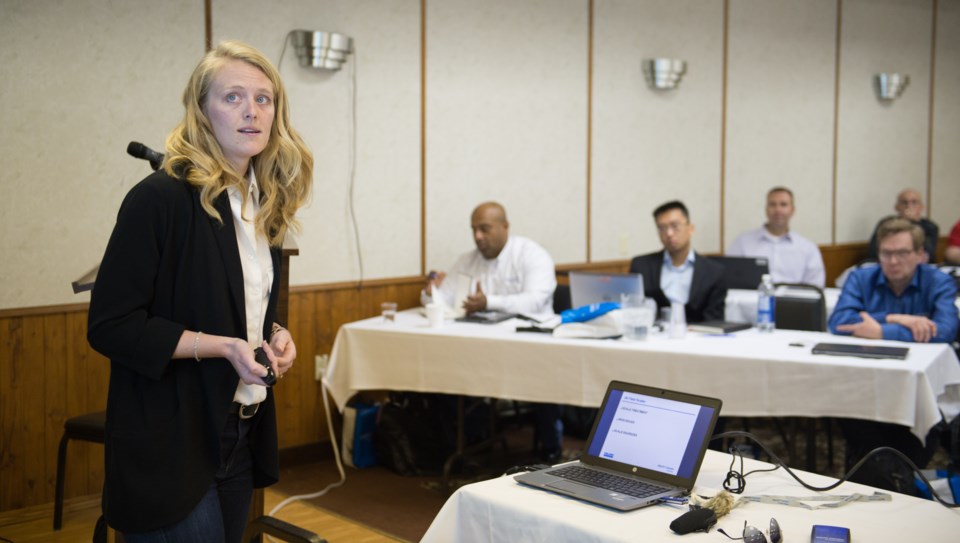Estevan – Nalco Champion has been on a substantial push in southeast Saskatchewan, updating labs in Estevan and Carlyle, and, most recently, holding a technical innovation day in Estevan on May 10.
The first topic came on the heels of a technical presentation to the Williston Basin Petroleum Conference on May 3 on the same subject: scale management and scale squeezing.
The next presentation focused on PAA facility treatments and downhole cleanouts. H2S removal technology was next up on the agenda, followed by computational modelling.
Sara Schneidmiller, who holds a PhD in chemistry, focused on scale in her presentation. She opened by noted that scale is essentially the same material we find in our showerhead and coffee pot, the result of hard water.
She pointed out that scale, the precipitation of minerals from aqueous solutions, is governed by thermodynamic, hydrodynamic or kinetic processes. The four most common types of scale are CaCO3, FeCO3, BaSO4 and FeS.
The last one, iron, can be particularly challenging, as it is highly insoluable. There is also an issue know as “iron poisoning.” It can often involve the necessity of using much more chemical if the right iron products are not chosen initially.
Schneidmiller spoke of using a scale squeeze technique to force chemical into a well and have it remain in the rock surrounding the well, slowly releasing the required chemistry over time as brine passes over it.
The process involves a pre-flush, the main treatment, and an overflush. It is then followed by shutting in the well for 12 to 24 hours, allowing the chemical time to absorb into the rock. Monitoring follows. She spoke of different modelling tools Nalco Champion has to analyze these squeezes, including one that can model different pay zones.
The example Schneidmiller spoke of focused on a North Dakota Bakken well that was highly fractured and had a temperature in excess of 120 C. They tested five scale inhibitors.
Proper monitoring is important to determine the success of the squeeze. “In this case, the squeeze lifetime exceeded the expectation of the model,” Schneidmiller said.
It also resulted in clean sand screens, pump operation, tubing and rods.
Roughly 35 people attended the morning session, and Mike LaCoste, Nalco Champion senior district account manager, expected different people to attend throughout the day as their interest may lie in different topics covered.
“The technical day is to bring our newest innovations to the industry. Our research and development labs are continually improving and bringing new products to the industry. This is also an opportunity for our employees to get an education as well. It’s as much an education for us, for our new products, as our customers,” LaCoste said.
The customers present were primarily oil company staff who focus on production, like production foremen, production engineers, reservoir engineers, geologists and facilities people.
“If this is received well, we’ll probably do one spring and fall,” LaCoste concluded.




